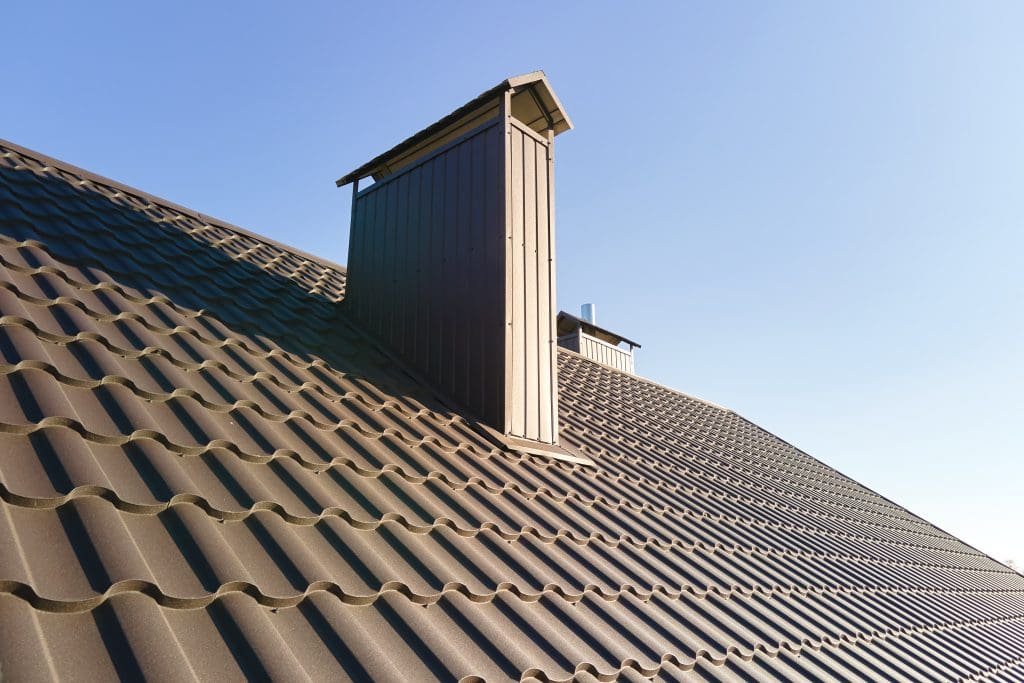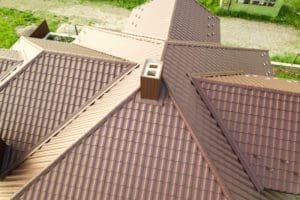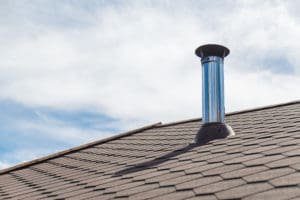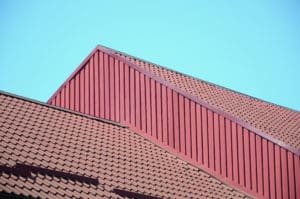Roofing materials play a crucial role in protecting our homes from the elements and ensuring their longevity. With a wide range of options available in the market, it is important to choose the right roofing material for your specific needs. In this comprehensive guide, we will delve into the basics of roofing materials, analyze various types of roofing options, explore their sustainability, discuss cost considerations, and provide expert tips for making the right choice. Whether you are a homeowner, a contractor, or simply curious about the topic, this guide will provide you with valuable insights into the world of roofing materials.
Understanding the Basics of Roofing Materials

The Importance of Choosing the Right Roofing Material
The importance of selecting the right roofing material cannot be overstated. A well-chosen roofing material not only enhances the aesthetics of your home but also provides protection against harsh weather conditions such as rain, snow, wind, and UV rays. It also contributes to the overall energy efficiency of your home, impacting heating and cooling costs. Moreover, the durability and lifespan of the material determine its long-term cost-effectiveness. Therefore, careful consideration is needed when making this important decision.
Different Types of Roofing Materials
There are numerous roofing materials available in the market, each with its own unique characteristics and advantages. Let’s explore some of the most popular options:
- Asphalt Shingles: Asphalt shingles are the most commonly used roofing material in North America. They are cost-effective, easy to install, and come in a variety of colors and styles. However, they may not be as durable as other materials and may require occasional repairs.
- Metal Roofing: Metal roofing offers durability, energy efficiency, and a long lifespan. It is resistant to fire, mildew, insects, and rot. Metal roofs are available in various styles, including standing seam, corrugated panels, and metal tiles.
- Slate and Tile Roofing: Slate and tile roofing are popular for their elegance and durability. They provide a timeless appeal and can last for several decades. However, they are heavy and require additional structural support. It is essential to work with an experienced contractor when installing slate or tile roofs.
Aside from these popular options, there are also other roofing materials worth considering. One such material is wood shingles or shakes. Wood shingles are known for their natural beauty and charm. They offer excellent insulation properties and can withstand extreme weather conditions. However, they require regular maintenance and may be susceptible to rot and insect damage if not properly cared for.
Another alternative is synthetic roofing materials, such as composite shingles or rubber roofing. These materials are designed to mimic the appearance of traditional roofing materials while offering enhanced durability and resistance to weathering. They are lightweight, easy to install, and often come with extended warranties.
When choosing a roofing material, it is important to consider not only the immediate cost but also the long-term benefits and maintenance requirements. Consulting with a professional roofing contractor can help you make an informed decision based on your budget, climate, and aesthetic preferences.
Detailed Analysis of Various Roofing Materials

Choosing the right roofing material for your home is a crucial decision that can impact both the aesthetics and functionality of your property. In addition to the popular options like asphalt shingles, metal roofing, slate, and tile, there are other materials worth considering, such as wood shakes, clay, and concrete. Each material comes with its own set of advantages and drawbacks, so it’s essential to weigh your priorities and budget before making a final choice.
Wood Shakes: Aesthetic Appeal and Maintenance Considerations
Wood shakes are favored for their natural beauty and rustic charm, adding a unique touch to any home. They are eco-friendly and biodegradable, making them a sustainable choice for environmentally conscious homeowners. However, wood shakes require regular maintenance to prevent issues like mold, rot, and insect infestations. Additionally, they are not as fire-resistant as other materials, so proper precautions should be taken to enhance safety.
Clay and Concrete Roofing: Durability and Architectural Versatility
Clay and concrete roofing tiles are renowned for their durability and longevity, with some roofs lasting well over 50 years. These materials offer excellent protection against fire, pests, and harsh weather conditions. In addition to their functional benefits, clay and concrete tiles come in a wide array of shapes, colors, and finishes, allowing homeowners to achieve a custom look that complements their architectural style. However, the weight of these tiles may require reinforced roof structures, adding to the overall cost of installation.
Sustainability and Roofing Materials

Eco-friendly Roofing Options
In recent years, there has been a significant shift towards eco-friendly roofing options as more homeowners and businesses prioritize sustainability. These environmentally conscious materials not only help reduce the carbon footprint but also offer a range of benefits. For instance, recycled shingles not only divert waste from landfills but also provide excellent protection against the elements. Metal roofs with high solar reflectance not only contribute to energy efficiency by reducing cooling costs but also have a sleek modern aesthetic. Additionally, living green roofs not only absorb rainwater, reduce urban heat island effect, and provide natural insulation but also create a habitat for birds and insects.
When considering eco-friendly roofing options, it’s essential to evaluate not just the initial cost but also the long-term benefits they offer. Investing in sustainable roofing materials can lead to energy savings, improved indoor comfort, and even potential tax incentives or rebates from local governments or utility companies. By choosing eco-friendly options, individuals can make a positive impact on the environment while enjoying the practical advantages these materials provide.
Durability and Lifespan of Different Materials
The durability and lifespan of roofing materials play a crucial role in the overall cost-effectiveness of a roofing system. While factors such as material quality, installation method, and climate conditions significantly impact a roof’s longevity, regular maintenance is also key to extending its lifespan. Understanding the expected lifespan of different materials can help property owners make informed decisions when selecting roofing options.
For example, asphalt shingles, one of the most common roofing materials, typically last 15-30 years depending on the quality and maintenance. On the other hand, metal roofs can last 40-70 years or more, making them a durable long-term investment. Clay and concrete tiles are known for their longevity, with lifespans of 50 years or more, but they require a sturdy roof structure due to their weight. By considering the durability and lifespan of different roofing materials, property owners can choose a roofing system that not only meets their immediate needs but also provides lasting protection and value for years to come.
Cost Considerations for Roofing Materials

Initial Costs vs Long-term Savings
When considering roofing materials, it is essential to evaluate the initial costs as well as the long-term savings. While some materials may have a higher upfront cost, they can provide significant savings over their lifespan due to their durability, energy efficiency, and low maintenance requirements. Balancing initial costs with long-term savings is crucial to making an informed decision.
For example, metal roofing is known for its high initial cost compared to traditional asphalt shingles. However, metal roofs have a much longer lifespan and require minimal maintenance, which can result in lower long-term costs. Additionally, metal roofs are energy-efficient, reflecting sunlight and reducing cooling costs in hot climates. These factors contribute to the overall cost-effectiveness of metal roofing over time.
Maintenance Costs for Different Materials
Maintenance costs vary depending on the type of roofing material. Some materials require regular inspections, cleaning, and occasional repairs, while others may be virtually maintenance-free. Understanding the maintenance requirements and associated costs is essential for budget planning and long-term satisfaction with your roofing choice.
For instance, clay tiles are a popular roofing material known for their durability and aesthetic appeal. While clay tiles are low maintenance and resistant to rot and insect damage, they can be more susceptible to breakage in extreme weather conditions. Regular inspections and repairs may be necessary to ensure the longevity of a clay tile roof, adding to the overall maintenance costs over time.
Expert Tips for Choosing Roofing Materials

Factors to Consider When Selecting Materials
When choosing roofing materials, several factors should be taken into account. These include climate conditions, aesthetics, durability, energy efficiency, maintenance requirements, and budget. Consulting with a roofing professional can provide valuable guidance based on your specific needs and preferences.
Climate conditions play a crucial role in determining the most suitable roofing materials for your home. For instance, in areas prone to heavy rainfall or snow, materials with high water resistance such as metal or slate may be more appropriate. On the other hand, in hot and sunny climates, materials with good heat reflection properties like clay tiles or asphalt shingles can help in maintaining a cooler indoor temperature.
Common Mistakes to Avoid
There are common mistakes that homeowners often make when choosing roofing materials. These include neglecting to consider the local climate, failing to assess the structural requirements, choosing purely based on aesthetics, and not exploring the long-term costs and benefits. Being aware of these pitfalls can help you make a well-informed decision.
Structural requirements are often overlooked but are essential in ensuring the longevity and safety of your roof. Factors such as the slope of the roof, weight-bearing capacity, and compatibility with existing structures need to be carefully evaluated before selecting the roofing material. Ignoring these aspects can lead to structural issues and costly repairs down the line.At Martinsburg Experts, we understand the importance of selecting the right roofing material for your home. With our extensive experience and knowledge, we are here to guide you through the decision-making process. Whether you prioritize durability, sustainability, cost-effectiveness, or aesthetics, we can help you find the perfect roofing solution that meets all your requirements. Contact us today for expert advice and professional roofing services.




